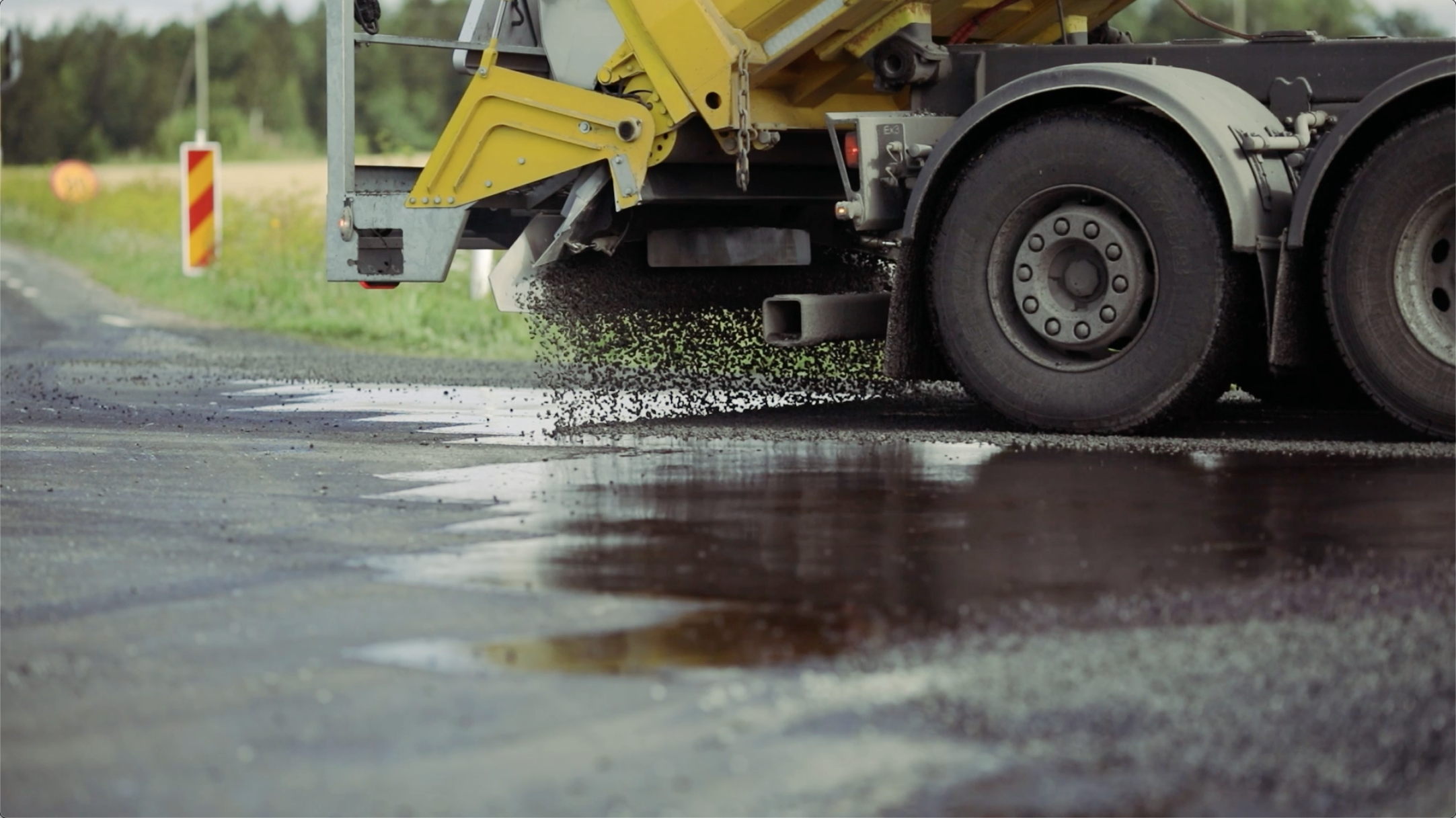A UK Case Study – Revisited by Verston Group
In a time of increasing pressure on infrastructure assets and public budgets, surface treatments like surface dressing offer a proven, efficient solution to extend road life, improve safety, and reduce long-term maintenance costs.
Maintaining Roads Under Pressure
Road networks across Europe are facing continuously rising maintenance challenges, from heavier traffic and harsher winters to tighter public sector budgets. The cost of full resurfacing can be quite high (considering the UK case – from £30 to £50 (€35 to €58) per square meter), making it unsustainable as a broad-scale solution, especially on roads that are still structurally sound.
Preventive strategies are increasingly being adopted to manage this tension proactively, aiming to intervene before deterioration accelerates, rather than reacting to failures. Surface dressing, in particular, has become a cornerstone of this shift in mindset.
A Proactive Treatment Strategy
Surface dressing is a preventive maintenance method in which a thin film of bitumen and stone chippings is applied to the existing road surface. This process restores grip, seals cracks, and extends the pavement’s lifespan, often by as much as 8 to 10 years.
A case in point: in 2023, Oxfordshire County Council treated 35 sites using surface dressing across its road network. Each site was completed in a day or less, with immediate reopening to traffic. This minimized disruption and maximized cost-effectiveness, treating road sections for approximately £5–£7 (€6–€8) per square meter, a fraction of the cost of resurfacing.
However, surface dressing and resurfacing are not mutually exclusive – they are both equally essential parts of the road life cycle.
Why This Phenomenon Works
The technical and economic case for surface dressing is backed by both data and field experience:
- Life extension: Up to 10 additional years of road use
- Safety benefits: Restores skid resistance and surface texture
- Cost efficiency: Typically 70–90% less than full resurfacing
- Speed of execution: Completed and reopened to traffic within hours
- Lower environmental impact: Reduced material use and energy consumption
Preventive treatments such as surface dressing help delay the need for more expensive interventions like resurfacing. If we miss the right timing for preventive maintenance, resurfacing may be required more often—and that’s significantly more costly.
In the worst-case scenario, it could even lead to full road reconstruction.
Looking Ahead
Surface dressing is not a replacement for all types of road repair—but as part of a planned, data-driven maintenance strategy, it delivers measurable benefits in cost, safety, and sustainability. Its success in regions like Oxfordshire provides a practical model for other authorities managing large-scale road networks with limited resources.
Sealing the surface early through applying the right treatment at the right time, helps avoid the need for deeper structural repairs later – delivering significant long-term savings as well as extended road-life – both contributing to long-term sustainability.
At Verston Group, we believe the future of road maintenance lies in early, intelligent interventions. By investing in treatments like surface dressing, communities can preserve infrastructure value, protect users, and reduce lifecycle costs across entire networks.
Reference: https://www.agg-net.com/resources/articles/asphalt/the-case-for-surface-dressing
